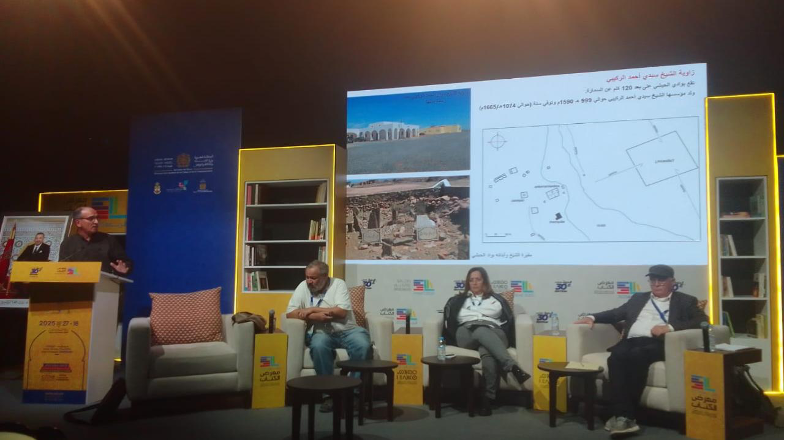Experts shed light on the rich cultural heritage of the Moroccan Sahara during a thought-provoking discussion at the 30th SIEL in Rabat.


Experts shed light on the rich cultural heritage of the Moroccan Sahara during a thought-provoking discussion at the 30th SIEL in Rabat.
On the sidelines of the 30th edition of the International Book and Publishing Fair (SIEL) in Rabat, the National Institute of Archaeology and Heritage Sciences (INSAP) organized a roundtable discussion on the cultural heritage of the Moroccan Sahara. The event, held in the Dialogue Hall, brought together experts to shed light on the Moroccan sahara’s archaeological, architectural, and intangible heritage.
In his contribution,researcher Mohamed Belaataq underlined the archaeological and architectural legacy of the Islamic period in the Smara province. He stressed the difficulties faced in this field, stating that "the harshness of the climate and the vastness of the territory make archaeological research in the region particularly challenging." He added that archaeology in the Moroccan Sahara is still in its early stages and suffers from limited attention, although INSAP has made it a strategic priority. This, according to Belaataq, requires a renewal of research methodologies and the integration of digital tools .
On his part , Mohamed Selou focused on cultural heritage models in the Saharan region, emphasizing the cultural richness brought by the diversity of its communities, including Bedouins and Haratine. He explained that while urban development in the Sahara remains limited hindering the evolution of architectural styles the region is rich from the side of cultural practices. Among them are “teblelih,” a tradition where a young girl stays at home without seeing the day light, for a year, to prepare for her marriage, “tahrach,” a celebration marking a divorce, “tarawa,” a playful ritual where the bride is 'kidnapped' by friends to make the groom jealous, and “al-ghayma,” a symbol of desert life.
The audience welcomed the discussion with great interest, viewing it as a fresh perspective on the Moroccan Sahara and a meaningful contribution to the recognition and preservation of its cultural identity.
